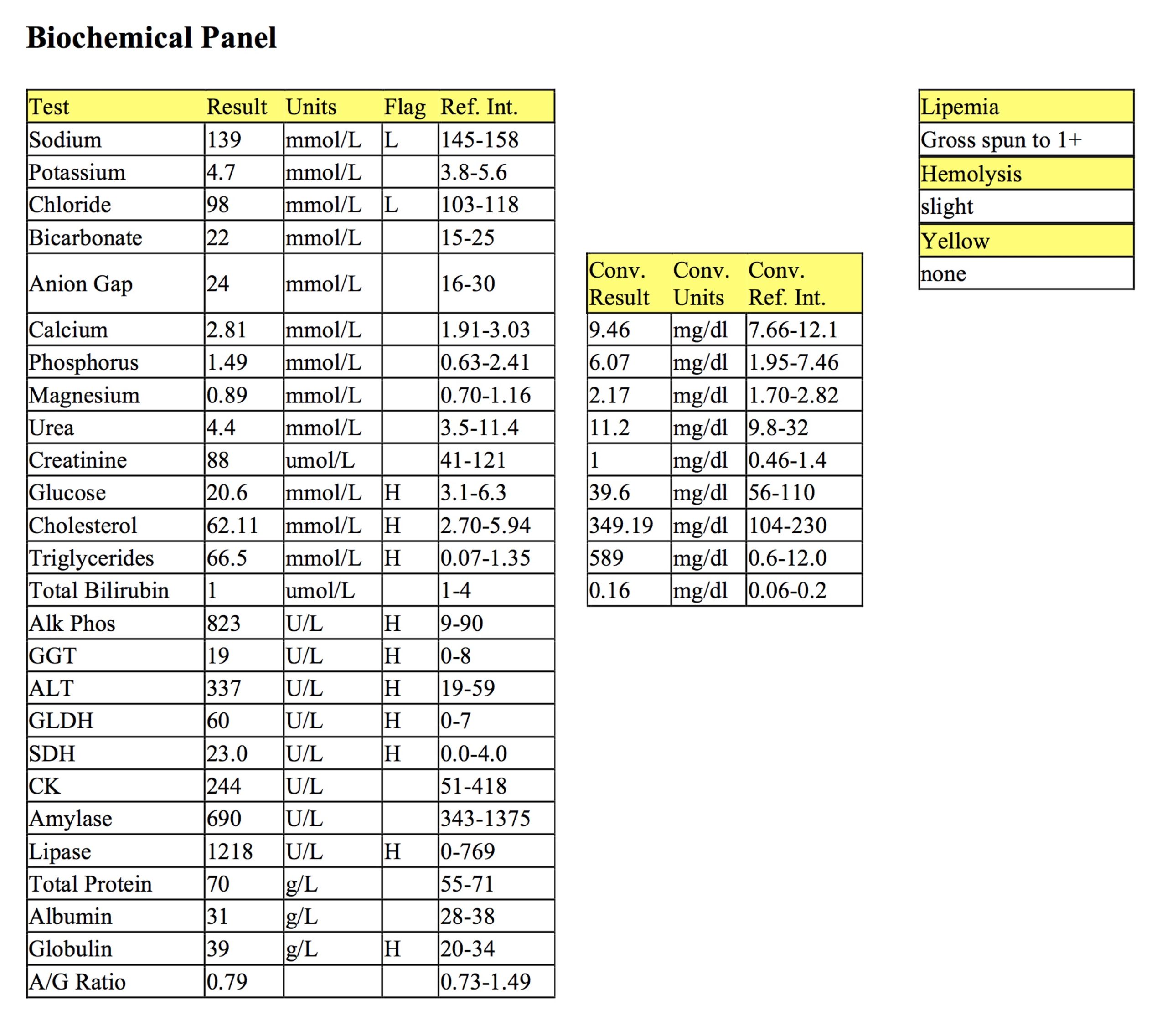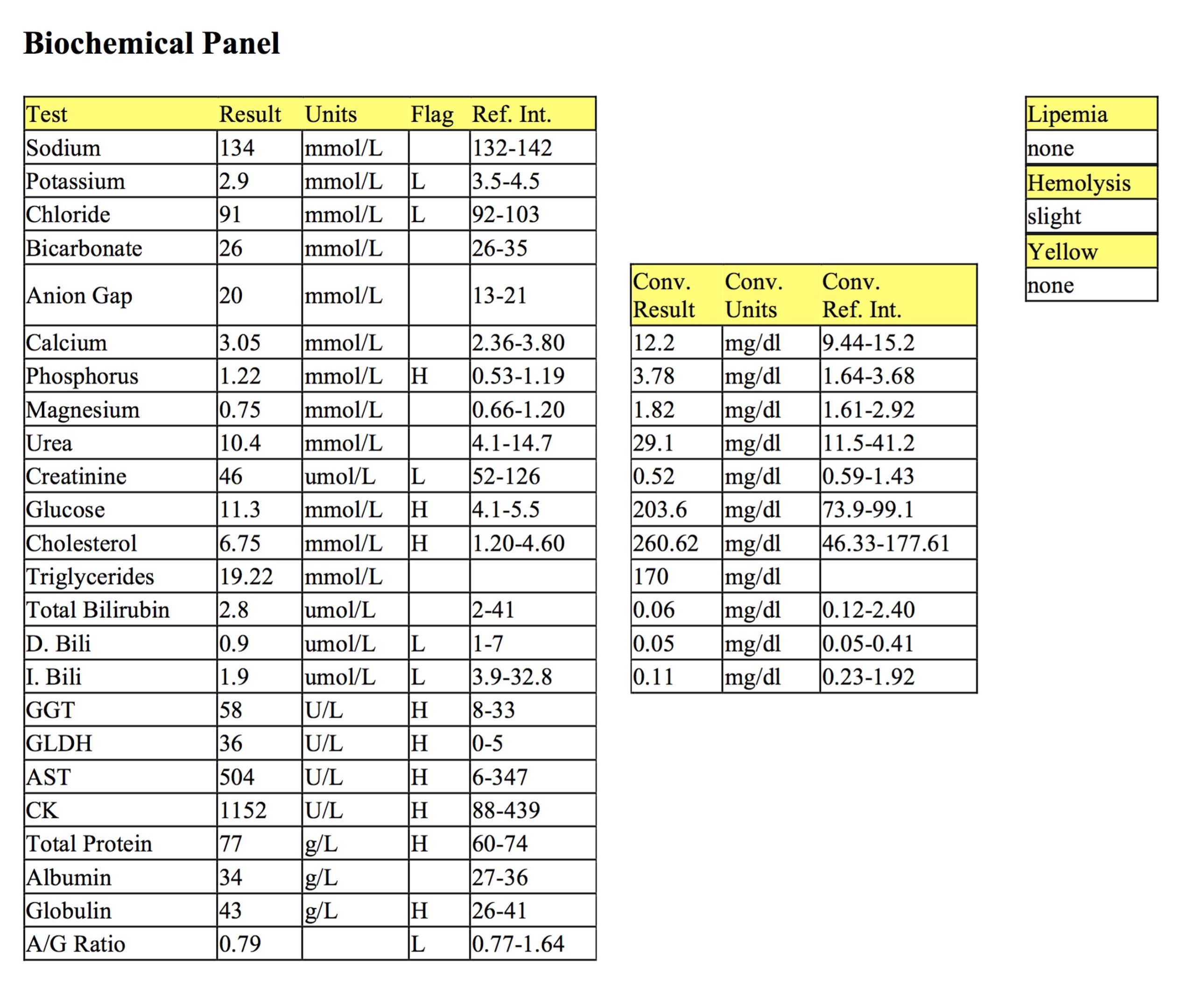Case Studies
Case 1: Frederick
Frederick, a M(c) Miniature Schnauzer dog of unknown age, was presented for uncontrolled diabetes mellitus.

Biochemical Panel
Mild hyponatremia and proportional hypochloremia likely reflect loss due to osmotic diuresis and fluid shifts secondary to hyperglycemia. Moderate hyperglycemia is consistent with the history of uncontrolled DM. Mild hyperlipasemia could be of pancreatic origin, especially since there is no evidence of renal disease. Marked hypercholesterolemia and hypertriglyceridemia are suggestive of primary idiopathic hyperlipidemia, although these are best evaluated when the animal is clinically healthy. Hypercholesterolemia could also be secondary to DM, pancreatitis, or hypothyroidism. Moderately increased activity of ALP and GGT reflect cholestasis, while increased activity of ALT, GLDH, and SDH indicate hepatocellular injury, possibly secondary to hepatic lipidosis due to DM. Mild hyperglobulinemia may reflect chronic antigenic stimulation.
- Frederick was suspected of having primary idiopathic hyperlipidemia, a disorder that has been reported in Miniature Schnauzers. Other endocrinopathies such as hypothyroidism or hyperadrenocorticism could not be ruled out.
- No follow up is available.
Case 2: Gale
Gale, a miniature donkey jenny of unknown age, has a history of anorexia and reluctance to move.

Biochemical Panel
Low normal sodium, mild hypokalemia, and mild hypochloremia may reflect decreased intake. Mild hyperphosphatemia is difficult to explain. Mild decrease in creatinine may be due to loss of muscle mass. Moderate hyperglycemia may indicate decreased insulin sensitivity or stress. Mild hypercholesterolemia and moderate hypertriglyceridemia likely reflect hyperlipidemia, possibly secondary hyperlipidemia given the history of anorexia. Note that although there is no laboratory reference interval available, triglyceride concentrations in horses are usually less than 9 mmol/L. Decreases in direct and indirect bilirubin are not pathologically significant. Moderately increased activity of GGT reflects cholestasis, and moderately increased activity of GLDH and AST reflect hepatocellular injury, in this case likely secondary to hepatic lipidosis as a result of hyperlipidemia. Some of the increase in AST may also be due to muscle injury given the moderate increase in CK activity. Mild hyperproteinemia is due to mild hyperglobulinemia, possibly reflecting chronic antigenic stimulation.
- Gale was suspected of having secondary hyperlipidemia precipitated by anorexia.
- No follow up is available
Additional Cases
Ch 10 Endocrine, Case 5- Marigold
Constellation of: retention of metabolic waste products, acid-base and electrolyte disturbances, and compromised urine concentrating ability that develops when the functional mass of the kidneys is reduced by 70% or more; may be acute or chronic.
Nonspecific term for sublethal or lethal injury to hepatocytes due to various causes, e.g. hypoxia, toxins, infection.
Break-down product of hemoglobin.

